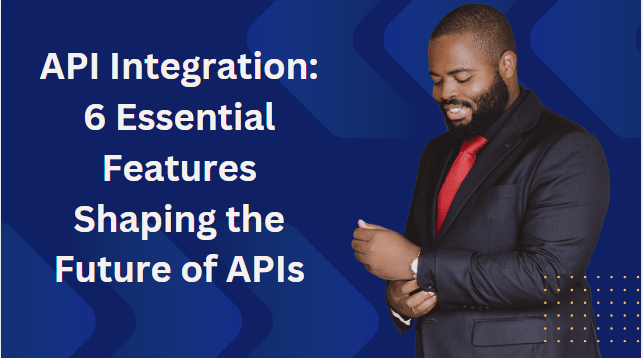Technological infrastructure rests upon APIs because they operate as connector interfaces that bridge different software networks for effortless universal coordination. The future of API development directions is distinguished by five main aspects that make vital contributions to software advancement throughout the development lifecycle and protection processes. Future-ready developers must lead API trends because they access innovative possibilities and build optimally efficient programming interfaces. The article provides insights into upcoming advancements that will shape API security as well as establish open-source APIs and artificial intelligence systems while streamlining API analytics and platforms with low or no coding requirements during the coming year.
Key API Trends to Watch This Year
- The Commoditization of API Gateways
Businesses have quickly adopted APIs during the last decade which led them to establish many different API gateways and runtimes to control their assets. Results from SmartBear indicate businesses deploy API gateways at an average rate of two. Every integration asset category shows rising complication levels according to research findings. Gateways operate as entry points yet numerous free open-source platforms have converted them into everyday items.
Multiple digital assets form a critical network in today’s competitive market. Companies need multiple API gateways that exceed basic public API management capabilities. Corporate clients want flexible solutions that let them easily exchange providers while maintaining operational freedom over their choice of technology platform. API systems requiring runtime control need to focus on extracting maximum value from their framework across gateway upstream and downstream pipelines.
2. API Security Takes Center Stage
API numbers continue to rise yet security dilemmas have intensified. APIs have evolved into primary cyberattack targets and API misuse now stands as the primary driver of data breaches per Gartner’s 2022 security report.
The modern security approach demands continuous full-stack security evaluations along with broad application interaction monitoring to defend APIs successfully. Because companies now spread their infrastructure beyond traditional security boundaries zero-trust security approaches together with encryption and strong identity verification mechanisms have become essential defense layers. Security protection models evolve from network-based systems toward application-level defense solutions.
- API-First Platforms on the Rise
The API-first building approach grows in popularity because developers create a rising number of platforms by starting with APIs first. The survey data from Postman State of the API Report 2022 shows two-thirds of the companies participating describe their API-first adoption status as high.
Organizations need to adopt the emerging API product wave to thrive in today’s market. The API Hub from Rapid serves as an effective infrastructure for API monetization that interfaces your offerings with 3 million developers. API-first adoption at the beginning creates organic scalability and unites organization-wide API design standards.
- Prioritizing Developer Experience
In today’s competitive API market developer experience stands as a pivotal factor to outshine competition. Like users need a superior UX experience developers need a DX experience since developers function as primary API customers.
Competition between companies has made it essential for organizations to provide effortless developer experiences to succeed. API selection from developers determines company decision directions and the success or failure of products moving forward. The development of exceptional developer experience depends on straightforward API utilization alongside smooth onboarding procedures while delivering flexible components through design solutions that reduce integration troubles.
- Standardized APIs Become the Norm
A standardized adoption trend of API designs will happen as businesses adopt standardized designs as their default practice and recognize best-practice approaches. Expert API integration services will implement unified systems for layout organization and cataloging while unifying styles across all platforms.
Businesses will simplify their system integration through standardized APIs by using cross-platform consistent application programming interfaces. The unified client experience across mobile apps and websites will reduce the challenges of delivering consistent high-quality service to users.
- Integrating AI and Machine Learning in API Management
Artificial Intelligence combined with Machine Learning functions represent the main API management trend that permeates the entire API lifecycle framework. API management systems experience enhanced operational efficiency and tool automation because of these recent technological innovations.
AI and Machine Learning algorithms operate at an increasing rate to analyze extensive API traffic data. The analysis produces meaningful data insights that reveal patterns while detecting unusual behavior and forecasting market changes. Platform engineers benefit from this development through a proactive method to handle API security and performance maintenance. Future systems driven by AI possess the capability to pre-emptively launch security procedures and generate warnings when detecting warning signs of potential threats.
AI and artificial intelligence along with machine learning bring essential tools for improving API performance results. The analysis of historical operational data through these technologies leads to better management of resource allocation and both load balancing operations and peak times predictions. Through their predictive features APIs maintain performance integrity which allows for reliable and quick responses to meet user demands thus improving perception.
The use of AI and ML drives transformative advances in API threat detection and protection. Advanced algorithms utilize historical security incidents to acquire better speed at detecting modern threats than conventional security protocols would achieve. Modern API protection requires this adaptable level of detection which confronts rapidly advancing cyber threats.
Conclusion: The Changing Landscape of API Management
Platform engineering faces a changing landscape through the convergence of Kubernetes-native API gateways with improved API security performance while developers gain prominence and platform engineering integrates machine learning and refined API design strategies to shape the future Platform engineer success depends on their ability to stay informed about emerging trends while being flexible so they can construct robust secure and efficient API infrastructure. The active adoption of these technological developments allows engineers to maintain platforms with edge-first positioning that withstands current digital industry demands.

